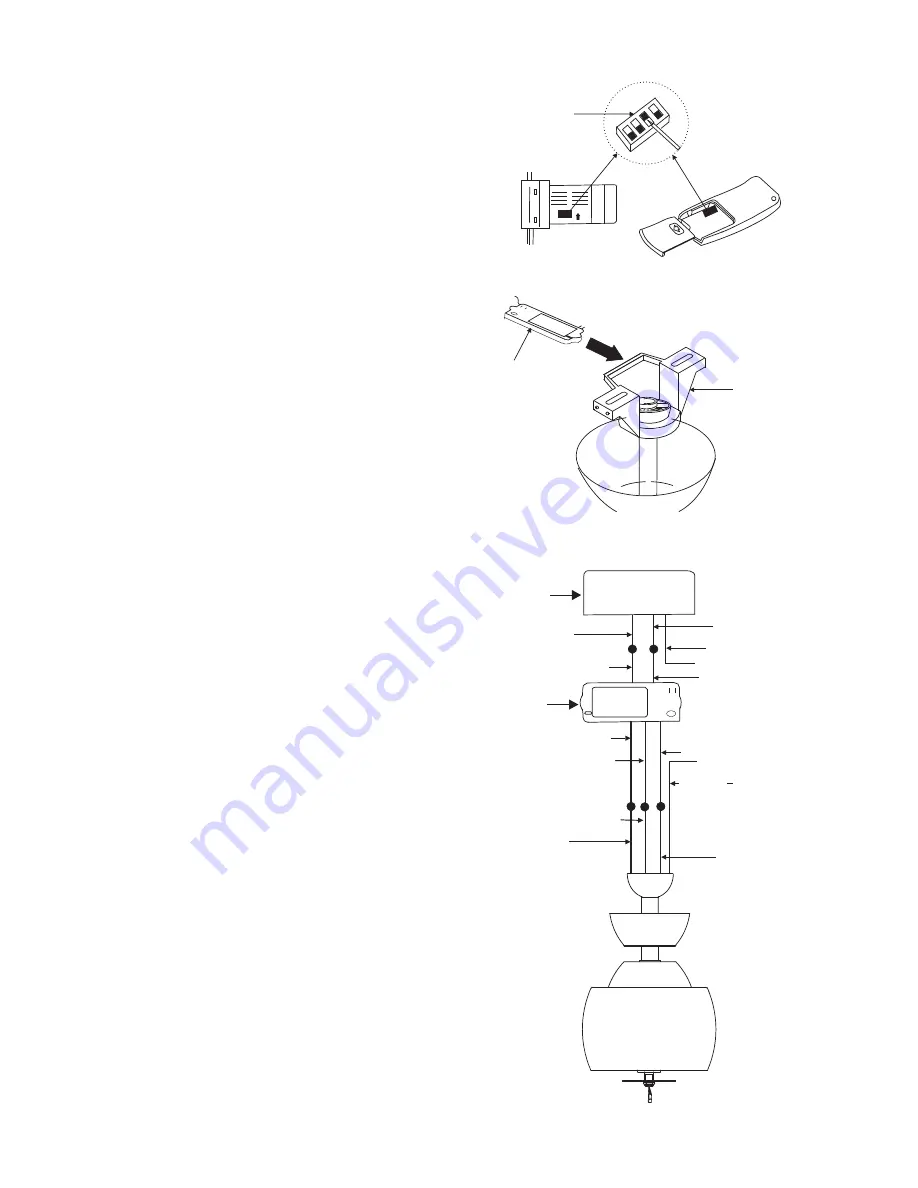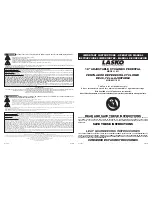
5
6. MAKE THE ELECTRIC
CONNECTIONS
WARNING:
To avoid possible electrical
shock, be sure electricity is turned off at
the main fuse box before wiring.
NOTE:
This remote control unit is
equipped with 16 code combinations to
prevent possible interference from or to
other remote units. The frequency
switches on your receiver and transmitter
have been preset at the factory. Please
recheck to make sure the switches on
transmitter and receiver are set to the
same position, any combination of settings
will operate the fan as long as the
transmitter and receiver are set to the
same position. (Figure 9)
Step 1.
(Figure 10) Insert the receiver into
the mounting bracket with the flat side of
the receiver facing the ceiling.
Step 2.
(Figure 11) Motor to Receiver
Electrical Connections: Connect the black
wire from the fan to black wire marked "TO
MOTOR L". Connect the white wire from
the fan to the white wire marked "TO
MOTOR N" from the receiver. Connect the
blue wire from the fan to the blue wire
marked "For Light" from the receiver.
Secure the wire connections with the
plastic wire nuts provided.
Step 3.
(Figure 11) Receiver to House
Supply Wires Electrical Connections:
Connect the black (hot) wire from the
ceiling to the black wire marked "AC in L"
from the receiver. Connect the white
(neutral) wire from the ceiling to the white
wire marked "AC in N" from the Receiver.
Secure the wire connections with the
plastic wire nuts provided.
Step 4.
(Figure 11) If your outlet box has a
ground wire (green or bare copper)
connect it to the fan ground wires;
otherwise connect the hanging bracket
ground wire to the mounting bracket.
Secure the wire connection with a plastic
nut provided. After connecting the wires,
spread them apart so that the green and
white wires are on one side of the outlet
box and black and blue wires are on the
other side. Carefully tuck the wire
connections up into the outlet box.
Figure 9
Figure 10
Figure 11
Code switch
ON
ON
Receiver
Hanger
bracket
White (neutral)
White (neutral)
Green or bare
copper (ground)
White ("AC IN N")
White ("to motor N")
Ground
(green)
(Connect to
ground wire on
hanger bracket
if no house
ground wire
exists.)
Outlet box
Black (hot)
Black ("AC IN L")
Black ("to motor L")
Receiver
Blue (for light)
Blue (for light)
Black (motor)





























